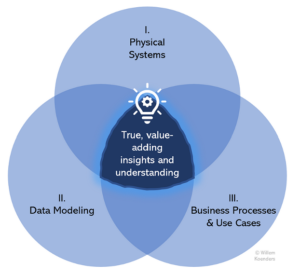
Seven trends in enterprise storage have been identified for 2024. (Click here for the first four trends in part one.) In part two, we will look at the remaining three trends. This information will help equip you to prioritize and be successful in the new year.
Trend: Skills gap in storage calls for an increase in automated storage
A skills gap across the data center and, particularly, in enterprise storage has emerged, and the trend is that this gap is getting wider. Fewer IT professionals are choosing to specialize in storage yet capacity trends to grow in the enterprise exponentially. While it makes storage administrators more valuable at this time, an increasing number of enterprises are having trouble staffing the roles to manage traditional, legacy storage in support of applications, workloads, and the entire data infrastructure. The shortage of qualified IT professionals creates a precarious situation for the future of many enterprises. Therefore, the trend in the enterprise space is to turn to AI-equipped autonomous automation of enterprise storage.
With autonomous automation going mainstream in the enterprise space, CIOs and IT leaders can take a “set it and forget it” approach to storage. They can reduce the risk of the skills gap jeopardizing their ability to have an always-on, reliable storage infrastructure. This approach, of course, requires a very simple user interface for the average IT professional to be able to manage the storage, whether to increase capacity, see insights into the performance of the storage system, or execute a rapid recovery from a cyberattack. At the same time, the use of autonomously automated storage frees up valuable IT headcount to be utilized in other areas of the datacenter and enterprise software environments.
The increase in cyberattacks has exposed the skills gap even more because enterprise storage has become the new frontier for pressure-testing the merging of cybersecurity and cyber resilience. If storage continues to be done in the traditional ways, enterprise will continue to be held ransom by bad actors unleashing ransomware. However, by automating cyber detection with ML-tuned algorithms, the skills gap gets plugged with new capabilities, making the normal IT person look like a “storage superstar.” The trend is toward self-directed, self-adjusting autonomous automation of enterprise storage to reduce the risks associated with any major skills gap.
Trend: Opening up the potential of containers in the hybrid cloud data center
It’s estimated that approximately 90% of global organizations will be running containerized applications in production by the year 2026, according to Gartner analysts – up from 40% just two years ago. By 2026, it’s estimated that as much as 20% of all enterprise applications will run in containers, more than doubling the percentage from 2020. The adoption and expanded usage of containers are definitely on the upswing. This multi-year trend is gaining momentum for 2024 because of the increasing need for enterprises to innovate at a faster rate today than ever to meet evolving customer expectations. The point is that enterprises are becoming more digitally-focused in order to better compete.
Containers, which exemplify a cloud-native approach, provide a cost-efficient way to automate the deployment of modern applications – and do it at scale – while making them portable, environment-agnostic, and less resource-dependent to achieve cost savings. Consequently, the rate at which new applications are being developed is monumental. IDC reported that by the end of 2023, roughly 500 million new “logical applications” will have been created – a number that is the equivalent to the amount of applications developed over the past four decades in total.
According to the latest available Cloud Native Computing Foundation (CNCF) survey, 44% of respondents are already using containers for nearly all applications and business segments and another 35% say containers are used for at least a few production applications.
More attention is being paid to thinking about the infrastructure – particularly the enterprise storage infrastructure – that supports containers. Storage is critical in the world of containers. The challenge with this trend is to pick the right enterprise storage, especially with enterprises globally needing to scale container environments into petabytes.
CSI is the standard for external primary storage and backup storage for container deployments, and it is becoming the default for Kubernetes storage environments and other container-run types. Applications, workloads, and environments are transforming around Kubernetes. It’s in your favor to work with an enterprise storage solutions provider that aligns to the CSI standards. The container world is moving so quickly and the versions of Kubernetes and the associated distributions get updated every three to six months. Kubernetes has emerged as the de facto standard for container orchestration.
Trend: Redefining the user experience for enterprise storage
For enterprise storage, user experience is no longer only about the graphical user interface (GUI). While the GUI is still important and should be as easy to use as possible, the scope of user experience has broadened to include essential elements for today’s day and age: guaranteed service level agreements (SLAs), white glove service, and professional services. Enterprises are not only looking for a box on which to run their applications and workloads; they are increasingly looking for excellence in service and support to be built into their storage solution.
The trend is for enterprises to opt for the storage vendor that offers the best support, best SLAs, and best proactive professional services, yet at a low cost or for no charge. It redefines the expectations for user experience. Enterprises want to know they have an advocate within the storage provider who can lend their expertise to solve challenges for the customer. They want to know they can get L3 support direct on a moment’s notice. They want to have confidence in the integration capabilities of a professional services team.
They see this all as added value, and it has become either a dealmaker or a deal-breaker for many enterprises that are reevaluating their choice of storage solution vendor based on this criteria. User experience has been transformed into the total experience for the customer.
- SEO Powered Content & PR Distribution. Get Amplified Today.
- PlatoData.Network Vertical Generative Ai. Empower Yourself. Access Here.
- PlatoAiStream. Web3 Intelligence. Knowledge Amplified. Access Here.
- PlatoESG. Carbon, CleanTech, Energy, Environment, Solar, Waste Management. Access Here.
- PlatoHealth. Biotech and Clinical Trials Intelligence. Access Here.
- Source: https://www.dataversity.net/what-trends-to-expect-in-2024-in-enterprise-storage-part-two/
- :has
- :is
- :not
- $UP
- 2020
- 2023
- 2024
- 2026
- 35%
- 500
- a
- ability
- Able
- About
- According
- Achieve
- across
- actors
- added
- administrators
- Adoption
- advocate
- age
- ago
- agreements
- algorithms
- Aligns
- All
- already
- amount
- an
- and
- Another
- any
- applications
- approach
- approximately
- ARE
- areas
- around
- AS
- associated
- At
- attention
- automate
- Automated
- automating
- Automation
- autonomous
- autonomously
- available
- average
- Backup
- Bad
- based
- BE
- because
- become
- becoming
- been
- being
- BEST
- Better
- Box
- built
- business
- by
- Calls
- CAN
- Can Get
- capabilities
- Capacity
- Center
- challenge
- challenges
- charge
- choice
- choosing
- Cloud
- cloud native
- compete
- computing
- confidence
- Consequently
- Container
- Containers
- continue
- continues
- Cost
- cost savings
- course
- created
- creates
- criteria
- critical
- CSI
- customer
- customer expectations
- cyber
- Cyberattack
- cyberattacks
- Cybersecurity
- data
- Data Center
- data infrastructure
- Datacenter
- DATAVERSITY
- day
- de
- decades
- Default
- definitely
- deployment
- deployments
- Detection
- developed
- direct
- distributions
- do
- done
- doubling
- easy
- either
- elements
- emerged
- end
- Enterprise
- enterprise software
- enterprises
- Entire
- environments
- Equivalent
- especially
- essential
- estimated
- Even
- EVER
- Every
- evolving
- Excellence
- execute
- expanded
- expect
- expectations
- experience
- expertise
- exponentially
- exposed
- external
- faster
- favor
- few
- fewer
- First
- For
- Foundation
- four
- from
- Frontier
- future
- gaining
- gap
- Gartner
- get
- getting
- Global
- Globally
- glove
- going
- Grow
- guaranteed
- Have
- having
- headcount
- Held
- help
- However
- HTTPS
- Hybrid
- hybrid cloud
- IDC
- identified
- if
- important
- in
- In other
- include
- Increase
- increasing
- increasingly
- information
- Infrastructure
- innovate
- insights
- integration
- Interface
- into
- IT
- IT professionals
- jpg
- just
- Know
- Kubernetes
- latest
- leaders
- least
- Legacy
- LEND
- less
- Level
- like
- longer
- Look
- look like
- looking
- Low
- Mainstream
- major
- MAKES
- Making
- manage
- many
- Meet
- merging
- million
- Modern
- Momentum
- months
- monumental
- more
- moving
- much
- multi-year
- native
- nearly
- Need
- needing
- New
- new year
- no
- normal
- Notice..
- number
- of
- Offers
- on
- ONE
- only
- opening
- or
- orchestration
- order
- organizations
- Other
- over
- paid
- part
- particularly
- past
- percentage
- performance
- person
- pick
- plato
- Plato Data Intelligence
- PlatoData
- Plugged
- Point
- portable
- possible
- potential
- primary
- Prioritize
- Proactive
- Production
- professional
- professionals
- provide
- provider
- qualified
- quickly
- Ransom
- ransomware
- rapid
- Rate
- recovery
- Redefining
- reduce
- reliable
- remaining
- Reported
- requires
- resilience
- respondents
- right
- Risk
- risks
- roles
- roughly
- Run
- running
- same
- Savings
- say
- Scale
- scope
- see
- segments
- self-directed
- service
- Services
- shortage
- should
- Simple
- situation
- SIX
- Six months
- skills
- skills gap
- So
- Software
- solution
- Solutions
- SOLVE
- Space
- specialize
- staffing
- standard
- standards
- Still
- storage
- successful
- Superstar
- support
- Supports
- system
- Take
- team
- than
- that
- The
- The Future
- the world
- their
- Them
- therefore
- they
- Thinking
- this
- three
- time
- to
- today
- today’s
- Total
- toward
- traditional
- transformed
- transforming
- Trend
- Trends
- trouble
- TURN
- two
- types
- unleashing
- updated
- Usage
- use
- used
- User
- User Experience
- User Interface
- using
- utilized
- Valuable
- value
- vendor
- very
- want
- Way..
- ways
- we
- What
- whether
- which
- while
- white
- WHO
- wider
- will
- with
- within
- Work
- world
- year
- years
- yet
- you
- Your
- zephyrnet












